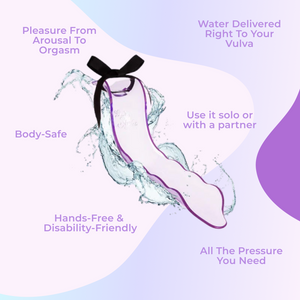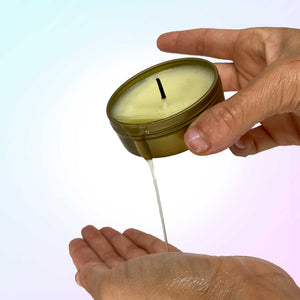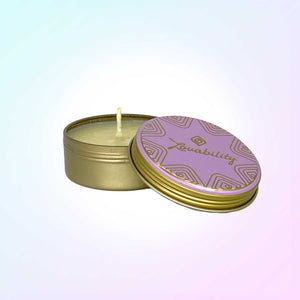The day I decided I’d write a piece on birth control, abdominal cramps bestowed upon me by The Pill were kicking my ass. The next day, The Pill presented a second gift: a yeast infection (like WTF?! I didn’t even know that could happen!!). That night I was so nauseous I woke up at 3am ready to throw up.
The Right Birth Control Is Different For Everyone
Through having ovaries, and having a lot of friends who have them too, one very special lesson has been learned: each form of birth control has completely different side effects for different people. It’s literally a game of trial and error.
When I was 17 and considering birth control, I made an appointment for what was called a “consultation.” Essentially, a doctor ran through all the different methods and their side effects. I remember sitting there as she listed them, confused, thinking to myself “all of these side effects are the exact same, so how do I pick which one is best?”
Finding The Right Birth Control Requires Trial & Error
In all honesty, the answer is that each of us tries, fails, and then tries again. Perhaps you got it right the first time, or perhaps you’ve opted out of medical forms of birth control. More likely than not, though, birth control has kicked – or will kick – your ass at some point in your life. So, rather than list the same side effects over and over the way that doctor did for me, I’m going to follow up a little bit of science with a lot of truth, by asking the women in my life how they deal.
Birth Control Options According To Real Women
I tried to pick types of birth control that one would regularly schedule rather than ones you use each time you have sex (except for condoms), and ones that are medically recommended as primary methods of birth control, rather than emergency contraceptives.

1. The Pill
When you think of the words “birth control,” the image of a small white pill probably pops into your mind. The pill seems to be the most popular of options when talking about conventional birth control. Statistics show that four out of five sexually-experienced women have used it before in their lives. The pill is to be taken every day at the same time, and is 99% effective if taken as scheduled.
With this method you can choose whether or not you’ll get your period monthly. Not often discussed is that there are two distinct types: combination pills (estrogen and progestin) and progestin-only pills. The estrogen keeps your body from ovulating (releasing an egg each month), and the progestin thickens cervical mucus.
All pills are not made equal. It’s important that whoever’s providing your prescription knows about your medical history, so they can help you make the best choice for your body.
“I’ve been taking it on and off for like four years. When I first started taking it my boobs grew, which was less of a side effect and more of a benefit. When I went to college I had to switch brands to get the pill at the pharmacy by my school. When I switched back to the original brand I was on that summer I started breaking out really bad. It was good that the pill was what made me breakout, as opposed to a longer term birth control method, because I could just stop taking that particular brand and my skin cleared up. Overall, the pill is the best form of birth control for me since I’m good about taking it on time, and it makes my period very predictable.”

2. Intrauterine Device (IUD)
An Intrauterine Device (IUD) is a form of birth control physically placed in your uterus by a medical professional. The initial insertion process usually takes less than 15 minutes, and can be done with or without anesthesia. After that, you should check on your IUD’s placement, using your fingers, once a month for the first three months.
Your IUD is either copper or hormonal, depending on the type it lasts for 3-10 years, and is more than 99% effective. The copper works by causing inflammation of the uterine lining that sperm can’t move through, and hormonal IUDs contain progestin. Make sure to receive STI testing before getting your IUD inserted to avoid the risk of Pelvic Inflammatory Disease.
“The worst thing about my IUD experience was the pain of getting it in. Most women don’t endure more than slight discomfort but it felt like my uterus was being stabbed by a knife. I think it’s worth the inconvenience though when you consider the consequences of an unplanned pregnancy. I love how effective it is, and that I don’t have to worry about taking a pill everyday or the effects of hormones.”
3. Condoms
Condoms - male and female - contribute to safer sex practices even when you’re using another form of birth control. They are meant to be worn each time you have intercourse, from start to finish, and as a form of birth control they are 98% effective when used properly.
Condoms are really the bees knees because they keep your sexual health as popping as possible because they’re THE ONLY birth control method that provides any degree of STI protection. Please note that some STI’s, such as herpes and HPV, are spread through skin to skin contact, so condoms can’t help 100% there. Sex is always risky — making smart choices is about minimizing those risks, not eradicating them. That’s done best with my friend, the condom.
“Condoms are a necessity because of STI prevention. I like to use other methods in addition to condoms though, as a backup. I’ve had a few experiences with condoms breaking, so it’s important to look into using a quality brand and to know your partner’s size.”

4. The Xulane Patch
The Xulane patch is all the fun of stickers with all the benefits of birth control! Same hormones as other birth control options, progestin and estrogen, now administered by a two inch square patch you replace once a week. Butt, stomach, back, arms — where you want to sport your patch is up to you and you can switch up the location every time you put on a new one (just don’t put it on the exact same spot it was on before, and don’t put it on your boobs!).
Coolest thing is that, like with the pill, you can choose to have your period one week as some reassurance that you’re not pregnant. Unlike the pill, you only really need to be precise about the day you replace your patch, not the hour. The hormones are no longer effective if more than 24 hours pass, so if your patch falls off before the week is over be sure to replace it before then. This method is 91% effective.
“The only thing I wish I knew before is that it’s not the best one for skipping your period. I was told I could skip my period every month just by not putting a patch on one week, but I would still spot. My doctor told me that sometimes I need to let myself have my period even if it’s every 3 months. So now I get my period and that kinda sucks. I also have a big recommendation for anyone thinking about getting the patch- ask for a 6 months to one year prescription. If you pick a box up monthly sometimes a patch can fall off and you end up using all your patches and having to call your doctor for more.”
5. The Depo Provera Shot
The Depo Provera shot is an injection you receive once every three months- convenient AF! Like the pill, it contains progestin to thicken your cervical mucus. It is most often administered by a healthcare professional but can be self-administered as well. It’s 99% effective when taken as scheduled.
“I liked being on the shot because it made my period go away completely, plus I’m bad at remembering things. I quit getting the injections though, after being informed at an appointment that doctors are now recommending you only get the shot for two years at a time because the hormones injected in you can interfere with your bone density. No public school health class or prior doctors had bothered to let me know.”
6. The Ring
All brands of the ring, including NuvaRing, allow estrogen and progestin to be absorbed through your vaginal lining. You insert the ring into your vagina every 3-6 weeks (depending on if you want to get your period) and go! Annovera is a new brand which, shockingly, can be left in for a whole year. Make sure to wash your hands before putting your ring in and taking it out, which you do by using your finger to hook it, and then disposing of it in the trash.
Your ring can be left in during all your day-to-day activities including sex. If the ring breaks, it will still do its job of pregnancy protection, and if it falls out just rinse it and reinsert. If it remains outside of your body for 3+ hours, you should reinsert it, but just know that you won’t be protected for the next two weeks. It is also 91% effective.
“I love that the ring is less maintenance than the pill or patch, but less commitment than the IUD or implant. Personally, it was the perfect ‘starter’ birth control. I currently use it continuously (to skip having periods), but you have to start it off with a ring-free week for at least three months before making that transition. A lot of people ask me if partners can feel the ring during penetrative sex. Some partners have, some haven’t — it all depends on the individual. Some people only noticed it once they knew it was there.”
7. The Implant
Nexplanon is a tiny, plastic rod inserted into your arm that releases the hormone progestin. The procedure is done by a doctor or nurse. Your skin would be numbed and the insertion is super fast, though your arm might ache a bit for a few days after. You’re protected from pregnancy for up to 5 years, and it’s 99% effective.
“I had always wanted the implant because it seemed the most ideal for someone forgetful like me, and it didn’t seem too invasive. When I got it it was fine at first, but then after about a month I started spotting and it just would not stop. After about 2 months of spotting every day I was starting to get really fed up because it was affecting my mood and confidence, and after 3 months I just couldn’t deal with it anymore. Doctors told me spotting often lasts for 5 months, I personally wasn’t willing to wait two more months for me to “maybe” stop bleeding. When I had it taken out the bleeding stopped immediately and I felt relieved.”
Do The Research To Find What's Right For You
The truth is, the process of choosing what birth control is for you is probably weighing pros and cons, and experiencing at least some side effects, rather than a walk in the park. But that’s ok! If you want birth control, or even need it as part of your daily medication, you shouldn’t let side effects scare you away. Having control over this aspect of our lives is an amazing power. And now, that power is more accessible than ever. We know you’ve got some success stories, or maybe even horror stories, about the form(s) of birth control you’ve used yourself.
Maybe you swear by a method we haven’t covered. Share your experiences with us in the comments below!
About the Author
A sophomore at New York University currently studying Gender and Sexuality Studies, Tara Jones (@tara.michaela on Instagram) hopes to get her Masters in Human Sexuality and go into either sex therapy or sex education. She wants to bring attention to how injustice manifests in sexual interactions and the orgasm gap. In Tara’s free time, she runs a small business designing and creating swimwear (@bytaraj on Instagram).
More Articles You Might Love

Get To Know Your Vulva





















